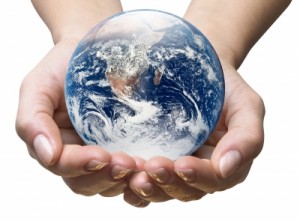
Photo Credit http://www.greenlivingzone.com/home/corvette/public_html/GreenLivingZone/wp-content/uploads/2010/03/2010/04/2Mani+mondo.jpg
Story reported in UT San Diego on Friday February 17, 2012 by UT staff writer Mike Lee
Secretary of State Hillary Rodham Clinton on Thursday issued an international “call to action” on climate and air pollution influenced heavily by research at UC San Diego, launching a new phase in efforts to avoid the worst effects of global warming.
Clinton unveiled a fast-attack plan against methane, soot and other atmospheric pollutants that are said to account for 40 percent of climate change and worsen air quality even though they remain in the atmosphere for just a matter or days or years.
She was joined Thursday in Washington by international environmental leaders in what some described as a modest but critical six-nation stand against global warming agents that have gotten much less attention than carbon dioxide.
“It’s the first formal recognition by a group of developing and developed countries that we need to target the non-CO2 climate forcers to get fast mitigation while we continue our deliberate pace with the global negotiations that focus primarily on CO2,” said Durwood Zaelke, president of the Institute for Governance and Sustainable Development in Washington, D.C. “We need to scale up the coalition and funding immediately.”
Two local researchers who have spent their careers studying the role of atmospheric pollutants played a leading role in drawing attention to problems posed by short-lived gases and particles: Veerabhadran Ramanathan, a climate and atmospheric scientist at Scripps Institution of Oceanography, and Mario Molina, a Nobel laureate in UC San Diego’s chemistry department. They formally framed the fast-action approach in a top-tier science journal three years ago.
The scientists said the world can buy time to trim carbon dioxide emissions — a major political and practical challenge that’s likely to take decades. The idea is to prevent the global climate from reaching a “tipping point” in which irreversible atmospheric changes create a doomsday scenario. It’s not clear when that would happen and some doubt it ever will.
“I have been working on this for 35 years, so for me it was such a historic moment,” Ramanathan said after the State Department event in which his work was cited. “What is significant here is that we have found common ground among all the nations. … It not only helps climate change, it gets rid of the brown clouds (of air pollution over Asia) and saves millions of lives and crop damage. It’s hard to argue against.”
Last year, a team of scientists working with the United Nations concluded that taking 16 actions targeting black carbon and methane could cut the rate of global warming in half over 40 years. While all regions of the world would benefit, researchers said, countries in Asia would see the biggest health and agricultural gains from emissions reductions.
Non-CO2 pollutants individually are less significant than carbon dioxide and come from multiple sources. That makes attacking them less straightforward than reducing emissions from power plants and autos, the main sources of carbon dioxide, which lingers aloft for centuries.
The upside is that existing technology can sharply reduce non-CO2 climate pollutants. For instance, black carbon can be reduced by adopting more diesel particulate filters on vehicles and by deploying clean-burning cookstoves. Other improvements can be made by capturing methane at landfills and coal mines around the world, using less-polluting refrigerants and managing agricultural waste to reduce the release of gases.
“Historically this non-CO2 approach has enjoyed broad political support from conservatives, businesses and public health advocates,” Zaelke said. “(It) has the potential to expand the coalition involved in fighting climate change and to build momentum for a pragmatic climate effort.”
Clinton’s coalition includes six countries — three from the developing world and three from the developed world — and the United Nations Environment Programme. The nations are the United States, Mexico, Canada, Sweden, Bangladesh and Ghana. The secretary said the effort launched with $15 million, but in remarks provided by the State Department, she didn’t detail how it would be spent.
Even though the initial amount of money is modest, Ramanathan is using his stature to push for complementary efforts by top officials in India, China and elsewhere. He also has spent years developing ways to cut soot pollution from home cooking fires in India.






